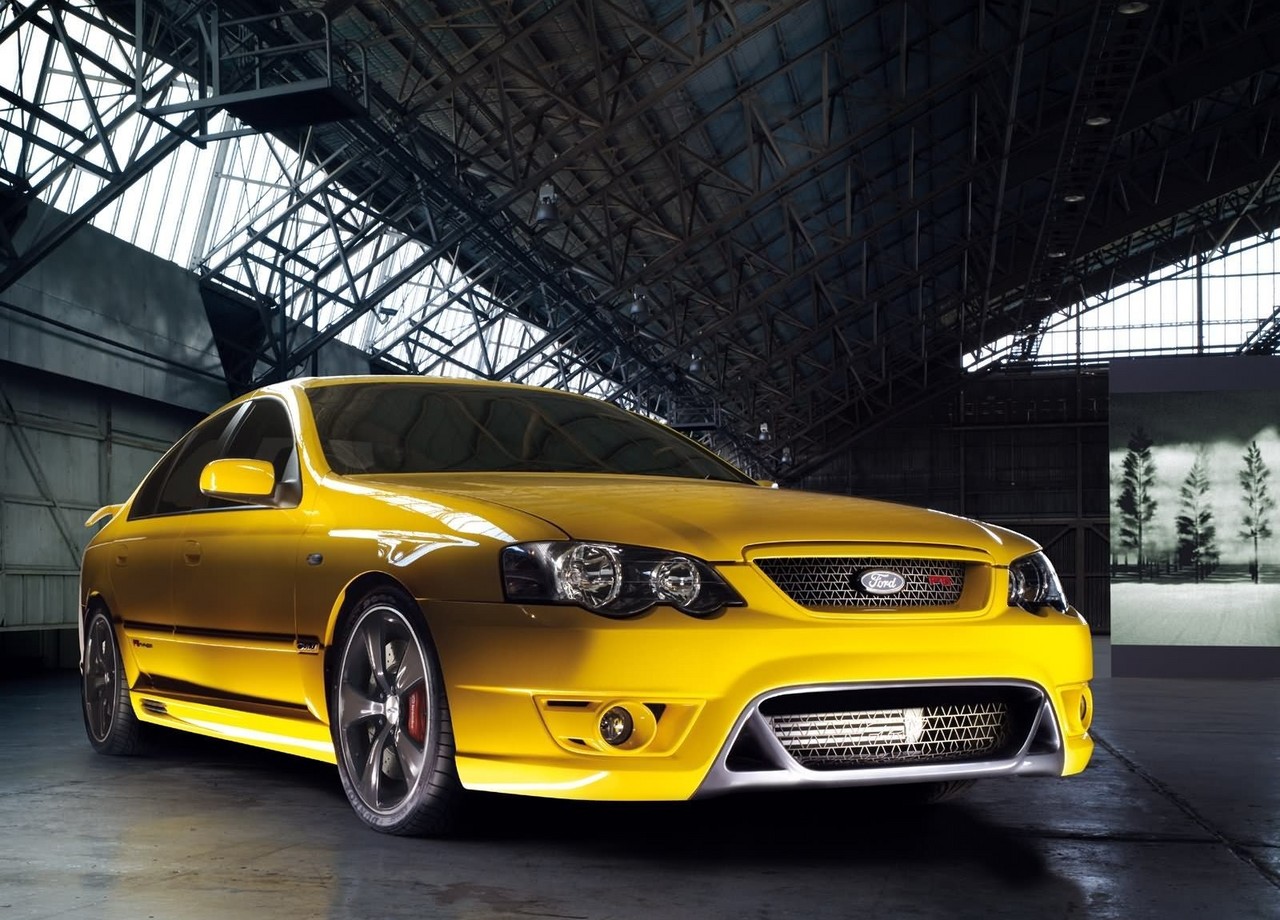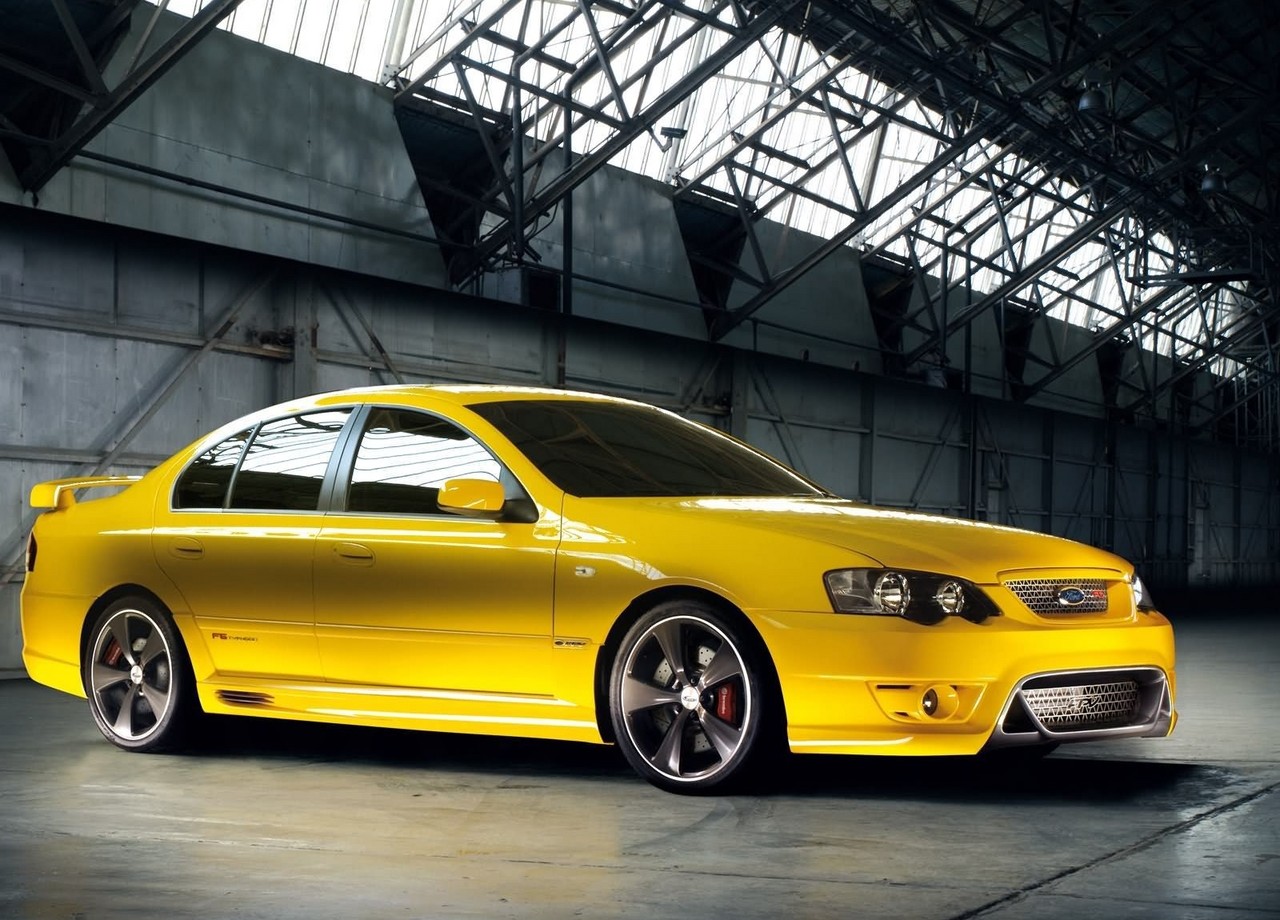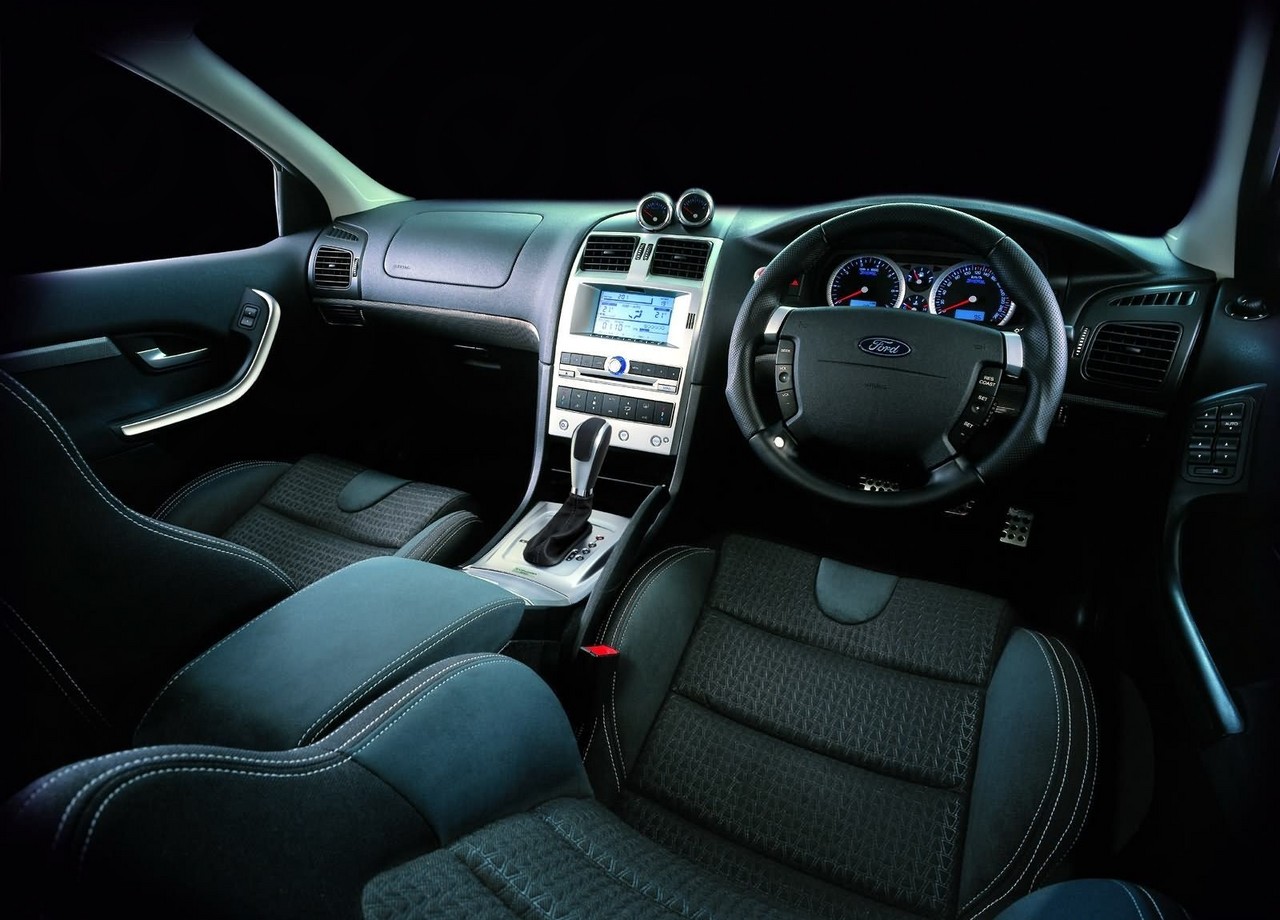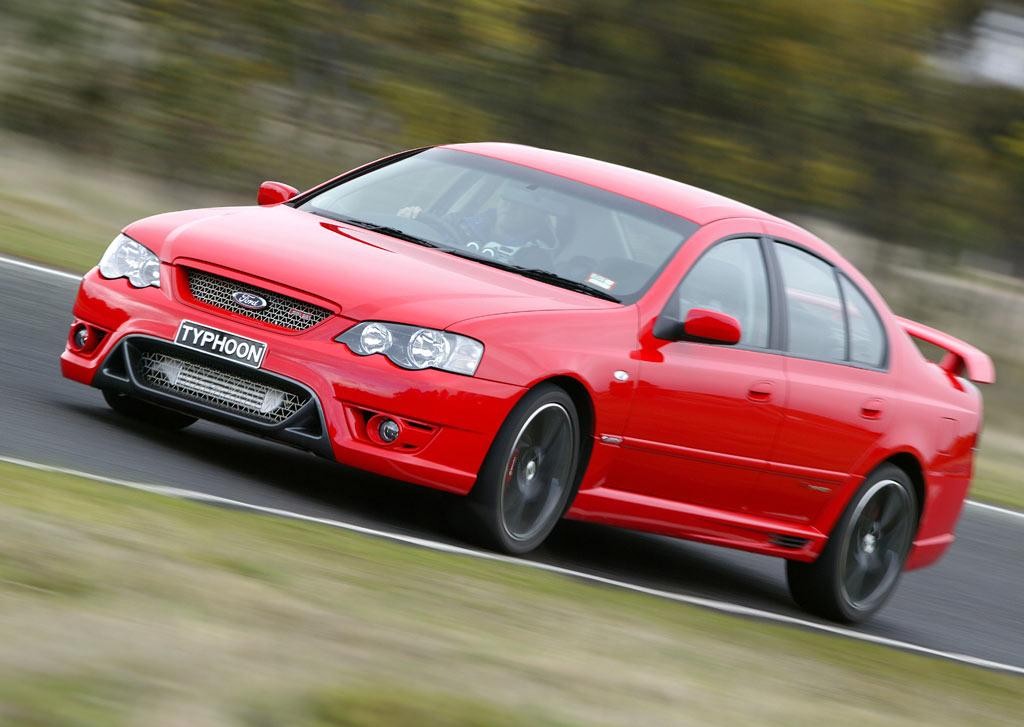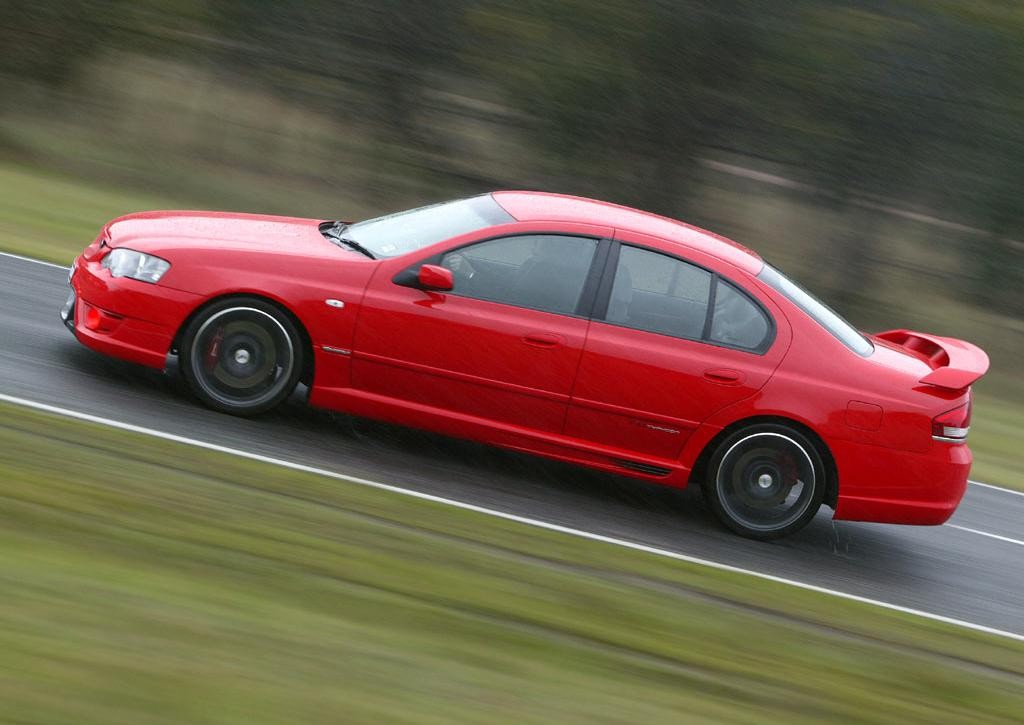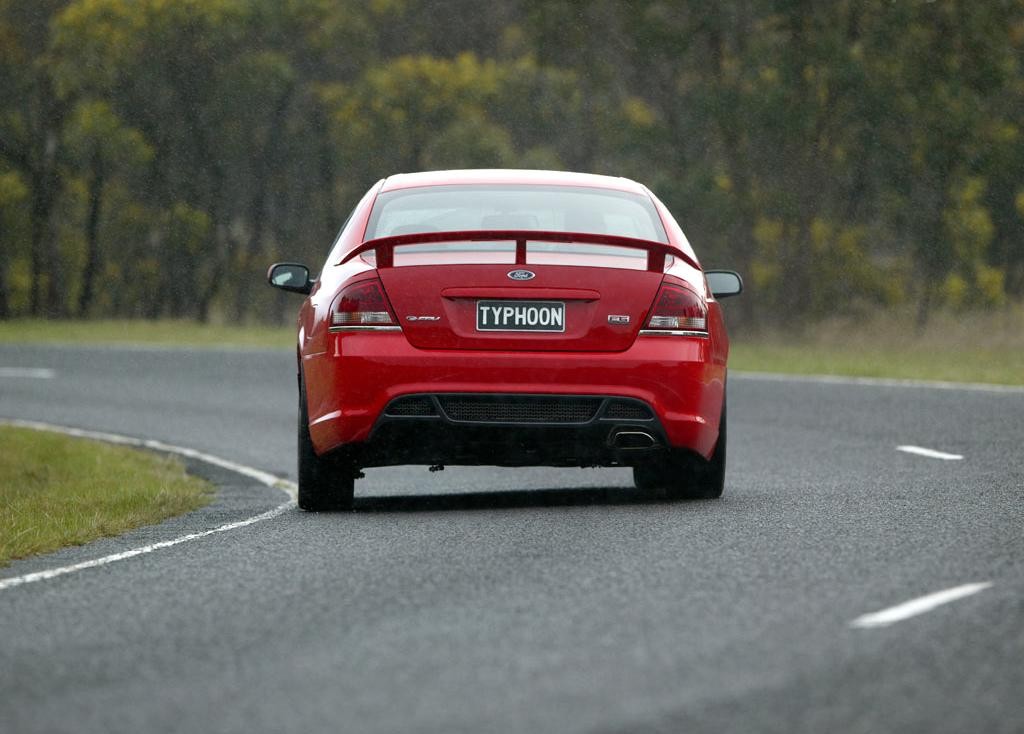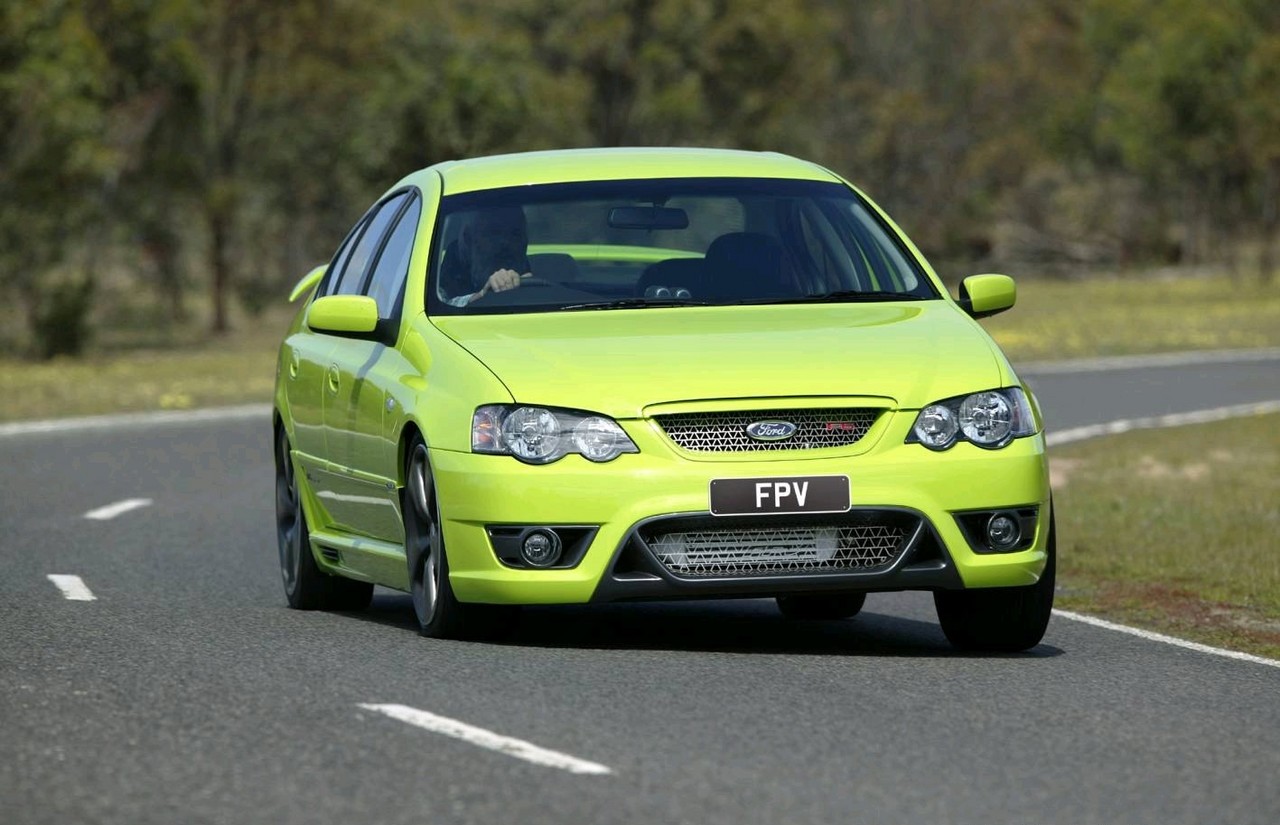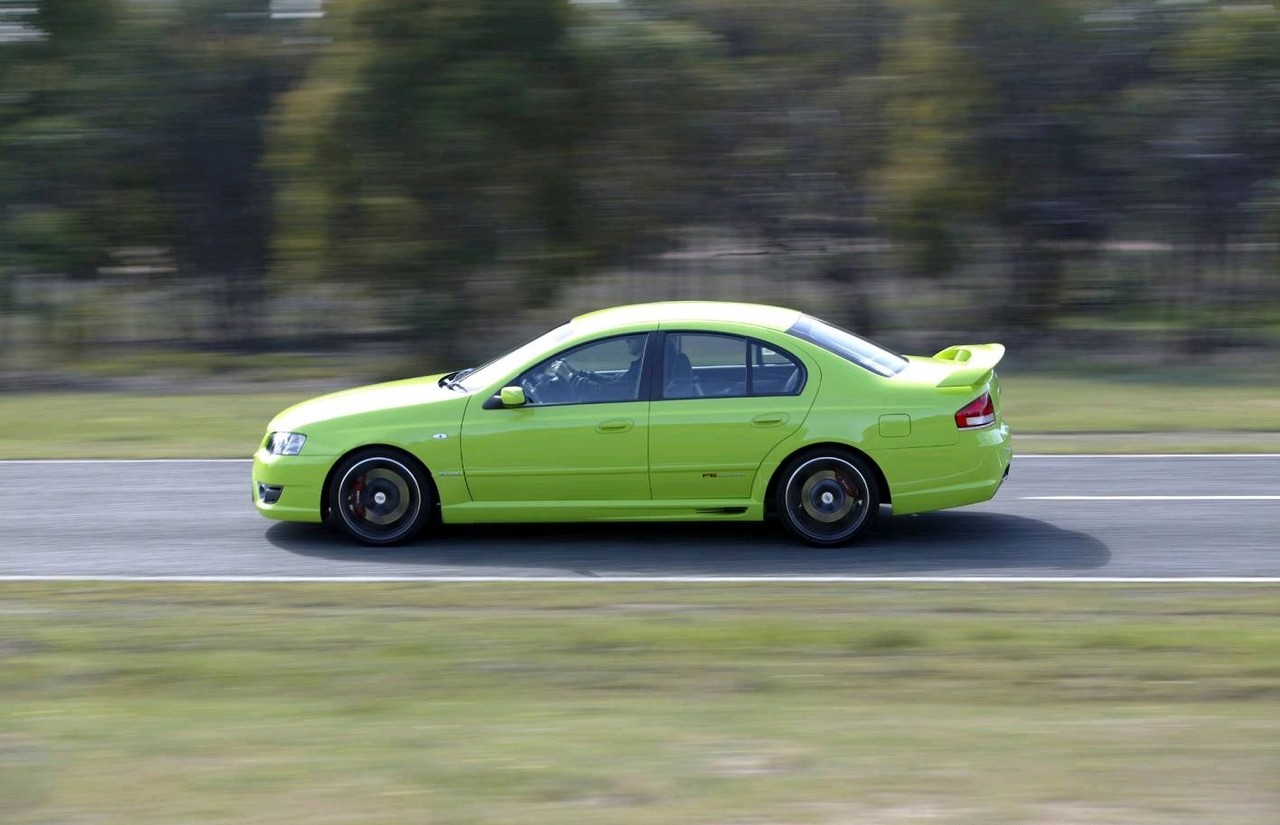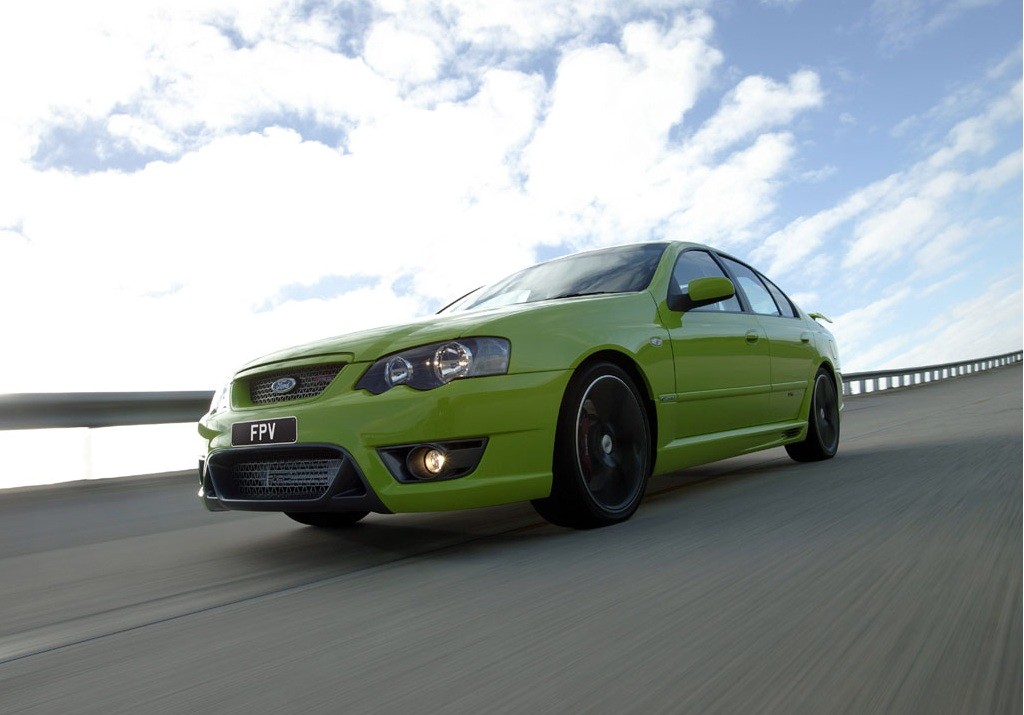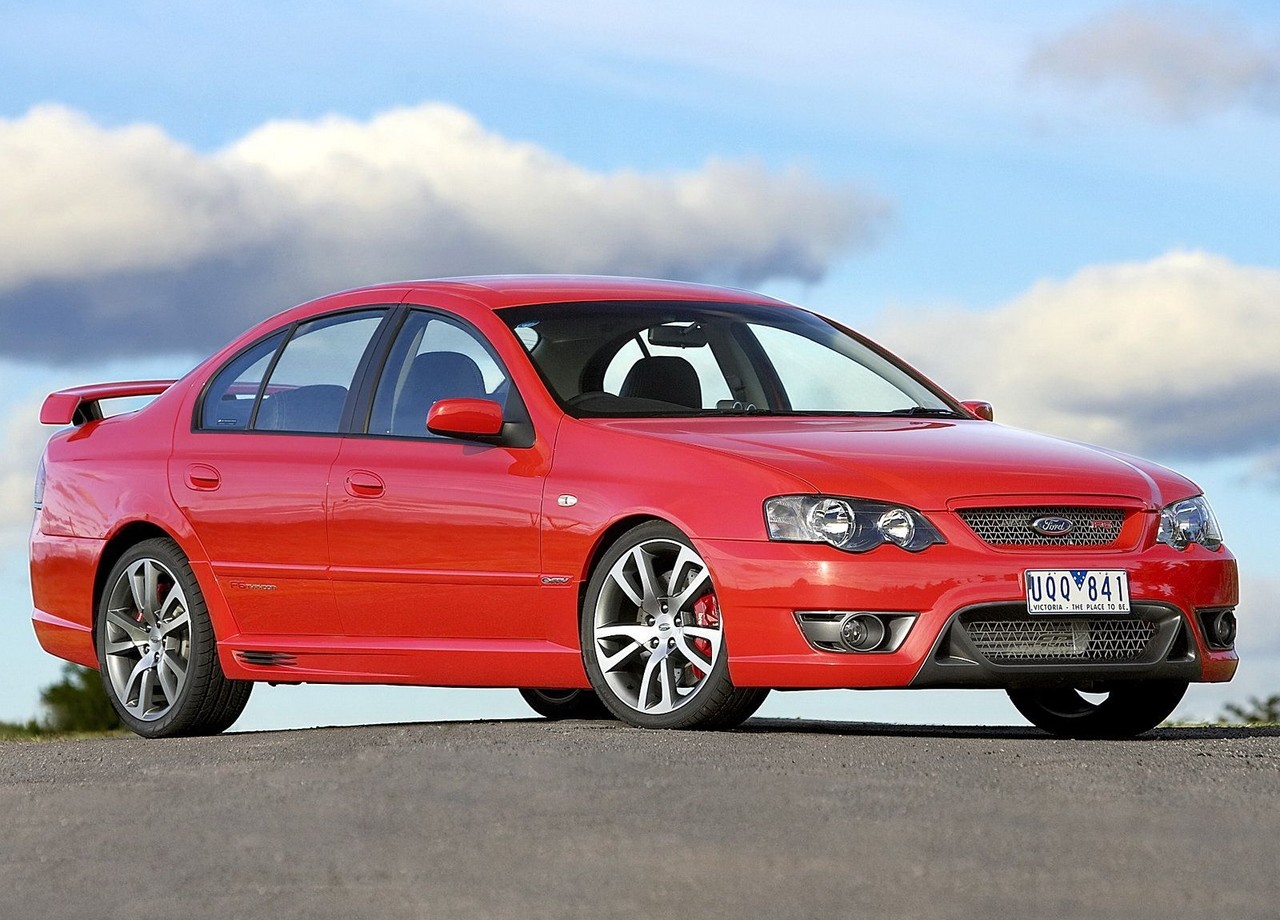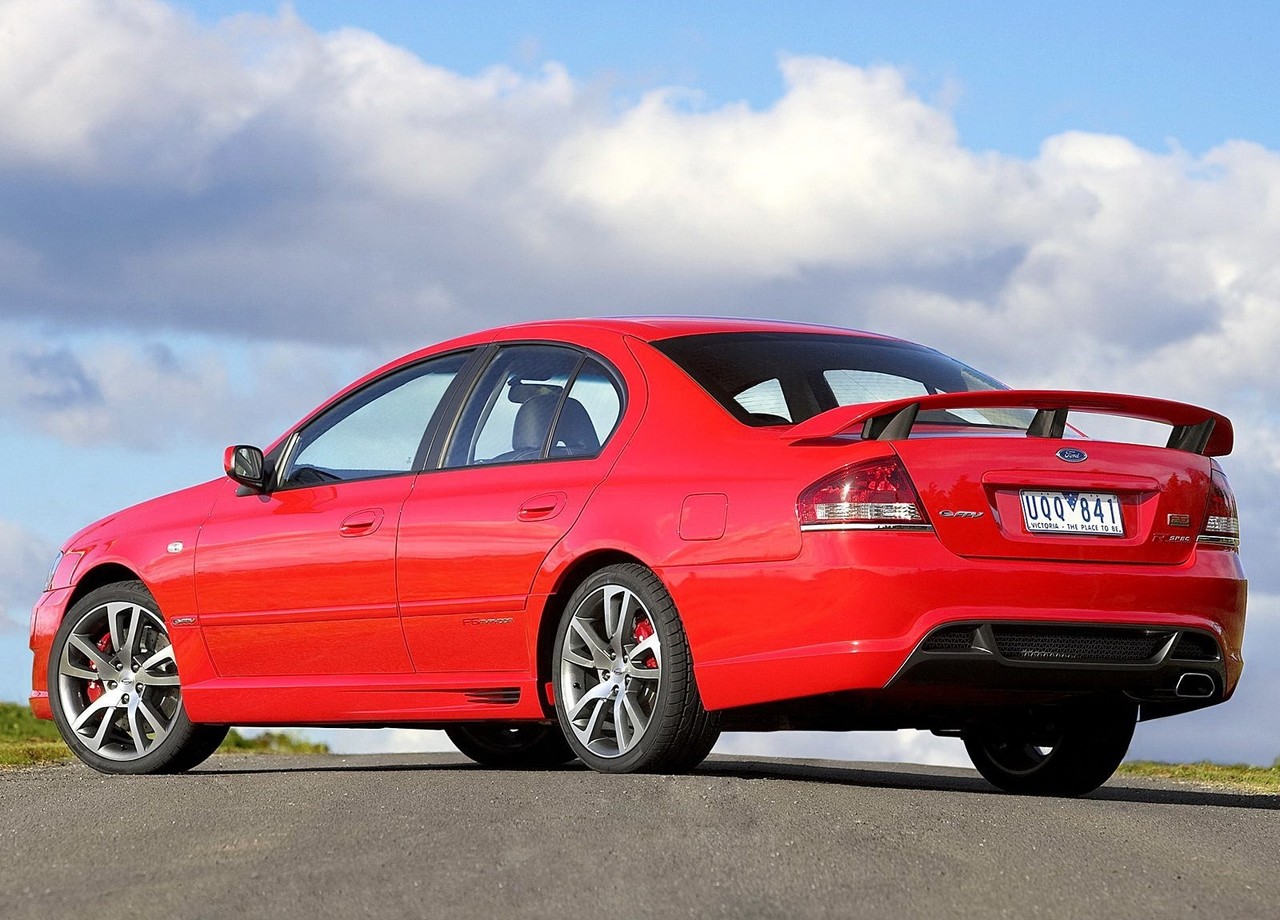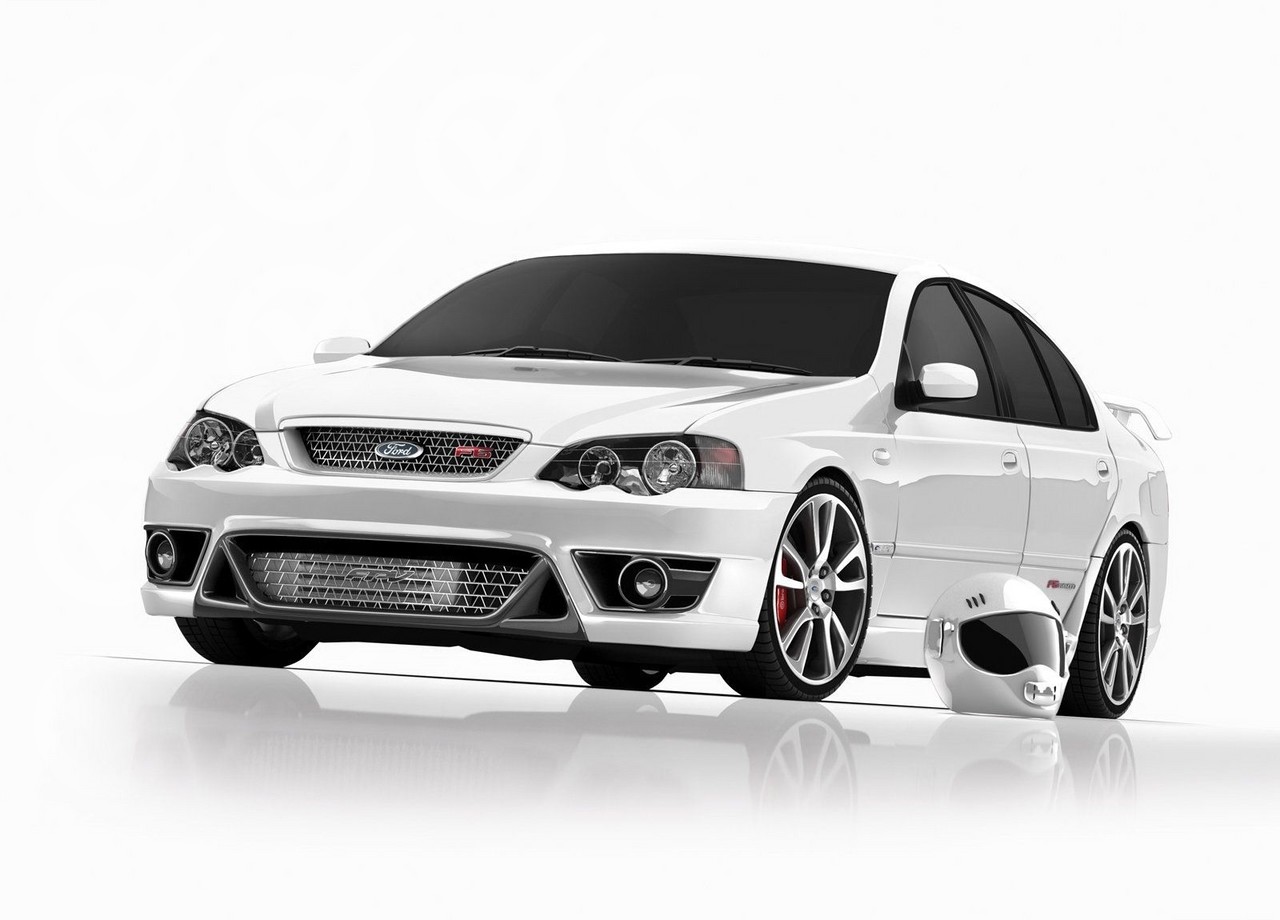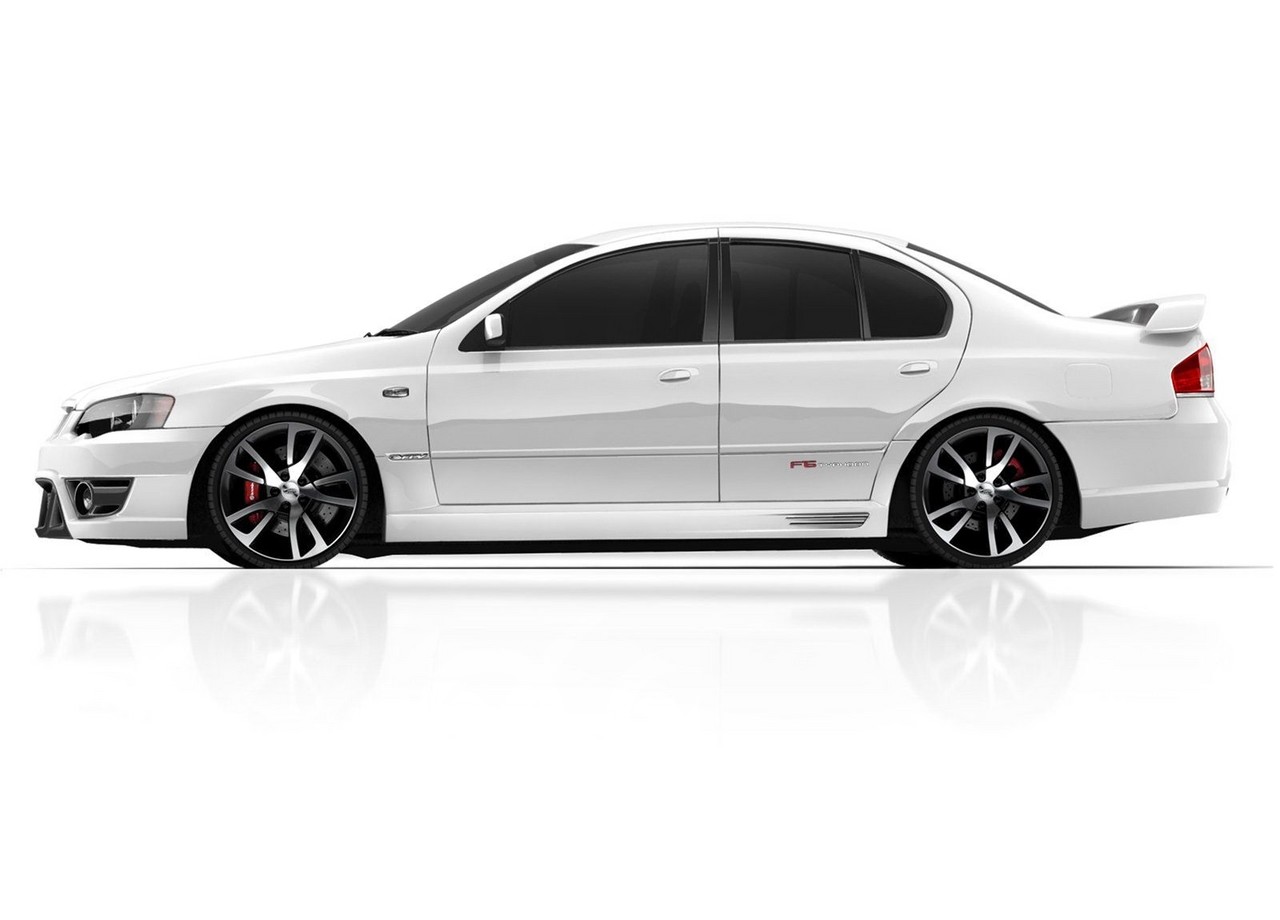
- Powerful ‘Barra 270T’ engine
- Impressive dynamics
- Refined six-speed ZF automatic transmission
- Accurate, well-weighted steering
- Powerful Brembo brakes
- Tremec T56 a chore to use
- For ZF transmission, coolant lines in heat exchanger were susceptible to failure
- Prone to drivetrain clunks
- No curtain airbags or electronic stability control
- ‘Control Blade’ semi-trailing arm rear suspension inferior to VE Commodore-based four-link IRS
Review: FPV BF.I F6 Typhoon (2005-06)
Overview
Released in October 2005, the FPV BF Mk.I (BF.I) F6 Typhoon was a rear-wheel drive, performance sedan. Manufactured in Campbellfield, Victoria, the F6 Typhoon was powered by a 4.0-litre turbocharged six cylinder petrol engine that was mated to either six-speed manual or automatic transmissions.
Compared to the FPV BA F6 Typhoon , the BF F6 Typhoon had an upgraded standard braking package (see ‘Brakes’, below) and could be identified by its deeper front bumpers, fog lights and ‘jewel-effect’ tail lights.
FPV F6 270T engine
The BF F6 Typhoon’s FPV F6 270T engine had a cast iron block, a cast aluminium cylinder head, a Garrett GT35/82R turbocharger which had engine oil-lubricated and water-cooler bearings, an air-to-air intercooler, an electronic single bypass wastegate, double overhead camshafts (DOHC, simplex chain-driven), dual independent variable camshaft timing, four valves per cylinder, Duratec-style finger followers, a dual resonance inlet manifold, coil-on-plug ignition, electronic throttle control and a compression ratio of 8.8:1.
To comply with Euro III emissions standards, changes for the BF F6 270T engine – relative to its BA predecessor – included:
- The introduction of twin knock sensors;
- A revised engine calibration; and,
- New camshaft profiles on the variable cam timing system with five degrees longer duration on the inlet and 10 degrees longer on exhaust.
Relative to the Barra 245T engine in the BF Falcon XR6 Turbo , the F6 Typhoon engine had:
- A 50 per cent larger twelve-core intercooler and dual entry ram airbox that increased boost pressure by 50 per cent to 0.64 bar (9.28 psi);
- Revised internals parts including high-strength valve springs and heavy-duty connecting rods; and,
- A unique FPV oil cooler.
For the BF range, ‘transient rpm’ limits were introduced which enabled the engine to momentarily exceed the prescribed rev limit of 6000 rpm during upshifting by 250 rpm (i.e. to 6250 rpm). This enabled wide open throttle upshifting of gears to be scheduled at an engine speed closer to the rev limiter than would otherwise be possible.
Transmissions: T56 and ZF6HP26
The BF F6 Typhoon was available with either:
- Six-speed Tremec T56 manual transmissions which had a twin-plate clutch that was supplied by AP Racing; or,
- Newly-introduced six-speed ZF 6HP26 automatic transmissions. The F6 Typhoon was fitted with the high-performance version of this transmission – which had upgraded clutches with extra plates in the clutch packs – and a torque capacity of 600 Nm.
The BF F6 Typhoon was fitted with a six-speed Tremec T56 manual transmission and a twin-plate clutch supplied by AP Racing. The close-ratio six-speed Tremec T56 manual transmission had double synchromesh on all forward gears and single synchromesh on reverse, linear bearings in the shift rail, direct linkage shifters, an electronic reverse gear lockout and a final drive ratio of 3.73:1.
The ZF 6HP26 transmission featured adaptive ‘Driver Recognition’ behaviour, including brake support downshifts, gear holding when cornering, gear holding for uphill and downhill driving and gear holding for fast-off throttle driving situations. Furthermore, the ZF 6HP26 transmission had a remote transmission oil cooler (RTOC) – with a three-way coolant thermostat – that was mounted to the engine block. Acting as a heat exchanger, coolant lines (or tubes) passed through the radiator to warm-up the transmission fluid on start-up and provide cooling under high load/high temperature operating conditions.
Development and dimensions
As per the BF Falcon range, changes for the BF F6 Typhoon included:
- The introduction of a two-piece, lofted outer dashboard;
- The addition of bitumastic pads to the body for damping of low- and mid-frequency noises;
- The introduction of an absorptive roof-liner;
- Improved static sealing;
- Body structure improvements through the fitment of a reinforcing box section to the transmission cross member and centre bearing body reinforcement;
- New engine and transmission mounts; and,
- Redesigned exhaust hangers to isolate muffler vibration from the body.
Other developments for the BF range included:
- The introduction of Bosch ABS 8.0 (previously 5.3) which included electronic brake force distribution;
- An upgraded traction control system and the introduction of electronic stability control and cornering brake control;
- A revised pedal map for the electronic throttle control; and,
- A higher-output alternator for improved fuel economy, lower rotational speeds and lower fan speeds.
The FPV BF F6 Typhoon was 4917 mm long, 1864 mm wide, 1444 mm tall and had a 2829 mm wheelbase; kerb weight was approximately 1770 kg.
Suspension
Like the FPV BA F6 Typhoon , the BF F6 Typhoon had double wishbone front suspension and independent rear suspension (IRS) which had three control arms:
- A forged upper control arm;
- A stamped front lower control arm; and,
- A stamped rear lower control arm.
Each control arm had a cross axis ball joint on the wheel assembly end and was attached to the subframe and knuckle. Furthermore, the ‘Control Blade’ was a stamped trailing arm which provided lateral support and acted as a vertical pivot point.
| Engine | Trans. | Peak power | Peak torque | |
|---|---|---|---|---|
| F6 Typhoon | 4.0-litre F6 270T turbo petrol I6 | 6sp auto, 6sp man. |
270 kW at 5250 rpm | 550 Nm at 2000-4000 rpm |
Safety equipment
Standard safety equipment for the FPV BF F6 Typhoon included dual front airbags, front side airbags, ABS, electronic brake force distribution, traction control and front seatbelts with pretensioners and load limiters.
Brakes
The FPV BF F6 Typhoon had 355 mm by 32 mm cross-drilled and slotted front brake discs with four-piston Brembo calipers and 330 mm by 28 mm rear discs with single piston calipers.
Features
Standard features for the FPV BF F6 Typhoon included 18-inch alloy wheels, a 150 watt sound system with six speakers, a subwoofer, six-disc CD player, TFT colour display, dual zone climate control air conditioning, contoured sports seats with suede-feel bolsters, a four-way power adjustable driver’s seat, cruise control, front fog lamps, automatic headlights, split and folding rear seats, remote central locking, power mirrors and windows, a tilt and reach adjustable steering wheel, trip computer and an immobiliser.
Review: FPV BF.II F6 Typhoon (2006-08)
Overview
Released in October 2006, the BF Mk.II (BF.II) F6 Typhoon introduced minor changes such as FPV performance steering wheels and chrome highlights for the air conditioning vents. Visually, the BF.II F6 Typhoon was largely unchanged from its BF.I predecessor.
| Engine | Trans. | Peak power | Peak torque | |
|---|---|---|---|---|
| F6 Typhoon | 4.0-litre F6 270T turbo petrol I6 | 6sp auto, 6sp man. |
270 kW at 5250 rpm | 550 Nm at 2000-4000 rpm |
Features
Compared to its predecessor, the BF.II F6 Typhoon was fitted with 19-inch five-spoke alloy wheels.
2007 FPV F6 Typhoon R-Spec
In August 2007, an ‘R-Spec’ edition of the F6 Typhoon was released; it was fitted with stiffer suspension, leather seats, an iPod/MP3 connection and floor mats. Visually, the F6 Typhoon R-Spec could be identified by its ‘Dark Argent’ gun-metal accents on the wheels and rear spoiler.
Related links
- Specifications: FPV BF.II F6 Typhoon and BF.II F6 Tornado (October 2006)
- Ford Newsroom: FPV Releases Limited Edition F6 R Spec Typhoon (August 2007)
- Wikipedia.org: FPV BF F6 Typhoon
